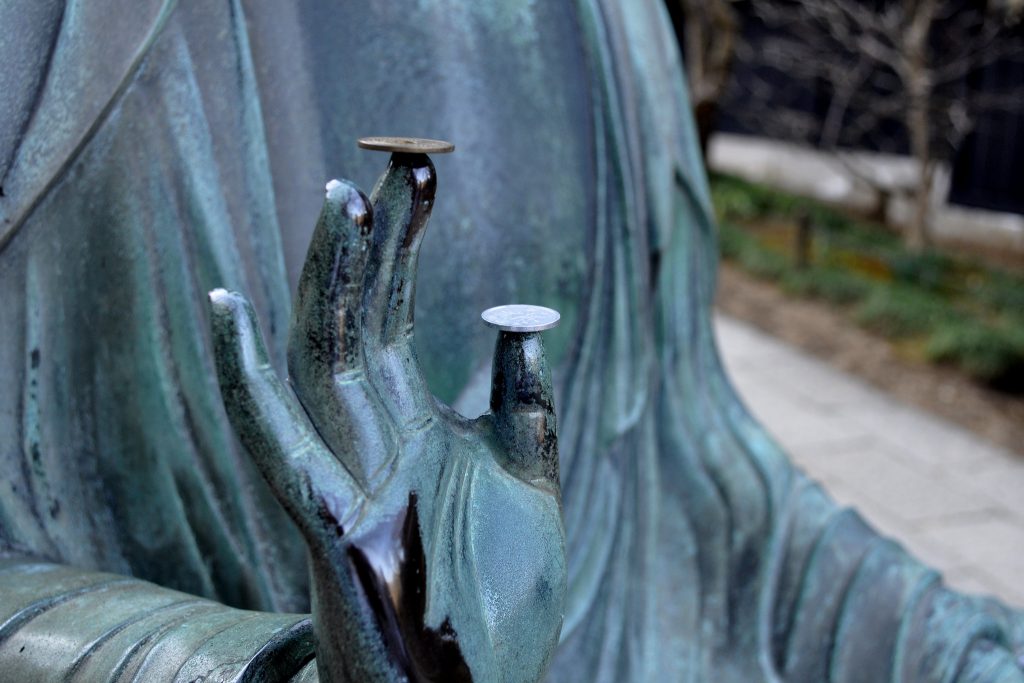Blog & Articles
Unwavering Upekkhā

The Serene Heart: Cultivating Equanimity for Liberation
Equanimity, or upekkhā, is a quality of balanced and impartial mental composure. It is one of the sublime attitudes or “divine abodes” alongside loving-kindness, compassion, and sympathetic joy. Equanimity involves cultivating a serene acceptance of life’s inevitable ups and downs without being swayed by attachment or aversion. In the practice of the Brahma Viharas, equanimity serves as a stabilizing force, fostering a calm and open-hearted response to the changing nature of experience. It is a state of mind that embraces both pleasure and pain with an unwavering, non-reactive presence.
My intention is to share insights that guide us towards a serene heart, addressing the near and far enemies of equanimity, and paving the way for wholesome states that beckon us toward liberation.
Cultivating Upekkhā: A Radiant Stillness
As we settle into our meditation posture, let us direct the attention inward, anchoring ourselves in the present moment. The practice of equanimity begins with the recognition that the nature of existence is marked by impermanence. From this understanding, we foster a balanced and impartial awareness, allowing experiences to arise and pass without attachment or aversion.
In the Metta Sutta, the Buddha beautifully encapsulates the essence of equanimity:

“Whether standing or walking, seated or lying down, as long as one is awake, one should develop this mindfulness. This, they say, is the divine abiding here.”
The cultivation of equanimity involves extending this mindful awareness to all aspects of our lives—embracing the ebb and flow with a serene acceptance. In the face of pleasure and pain, success and failure, honor and dishonor, the equanimous heart remains steadfast, undisturbed by the winds of worldly conditions.
Addressing the Enemies of Equanimity: A Balancing Act
Equanimity faces near and far enemies that can disrupt its delicate balance. The near enemy, often mistaken for equanimity, is indifference—a cold detachment that lacks the warmth of true equanimity. The far enemy is craving or aversion—emotional reactions that pull us away from the poised center of equanimity.
In our meditation practice, we actively work to discern these enemies, inviting a gentle investigation into our reactions and responses. Equanimity is not a shield against feeling; rather, it’s an open-hearted acceptance of the full spectrum of human experience. Through mindful awareness, we navigate the terrain of our emotions with grace, fostering a resilient equanimity that neither grasps nor pushes away.
Upekkhā and Liberation: A Harmonious Symphony
Why is cultivating equanimity crucial for the path towards liberation? Equanimity acts as a steady rudder, guiding us through the choppy waters of existence. It supports the arousing of wholesome states by creating a spacious, non-reactive mind that is conducive to wisdom and compassion.
As we deepen our practice, may our hearts resonate with the equanimity that the Buddha described—a divine abiding that transcends the changing tides of life. In this state of balanced awareness, we move towards liberation, cultivating a serene heart that is free from the entanglements of craving and aversion.
May our journey of cultivating equanimity be a beautiful offering to ourselves and all beings.

Johnathan Woodside
Johnathan is an Insight Meditation teacher offering Dharma instruction rooted in the Theravada tradition of ethics, concentration and wisdom.
Recent Posts
Have Any Question?
Greetings, fellow Mediators! I invite you to gather your strong determination for study and practice with me. Feel free to share your questions, and together, we’ll realize the liberating insights of the Dharma.

